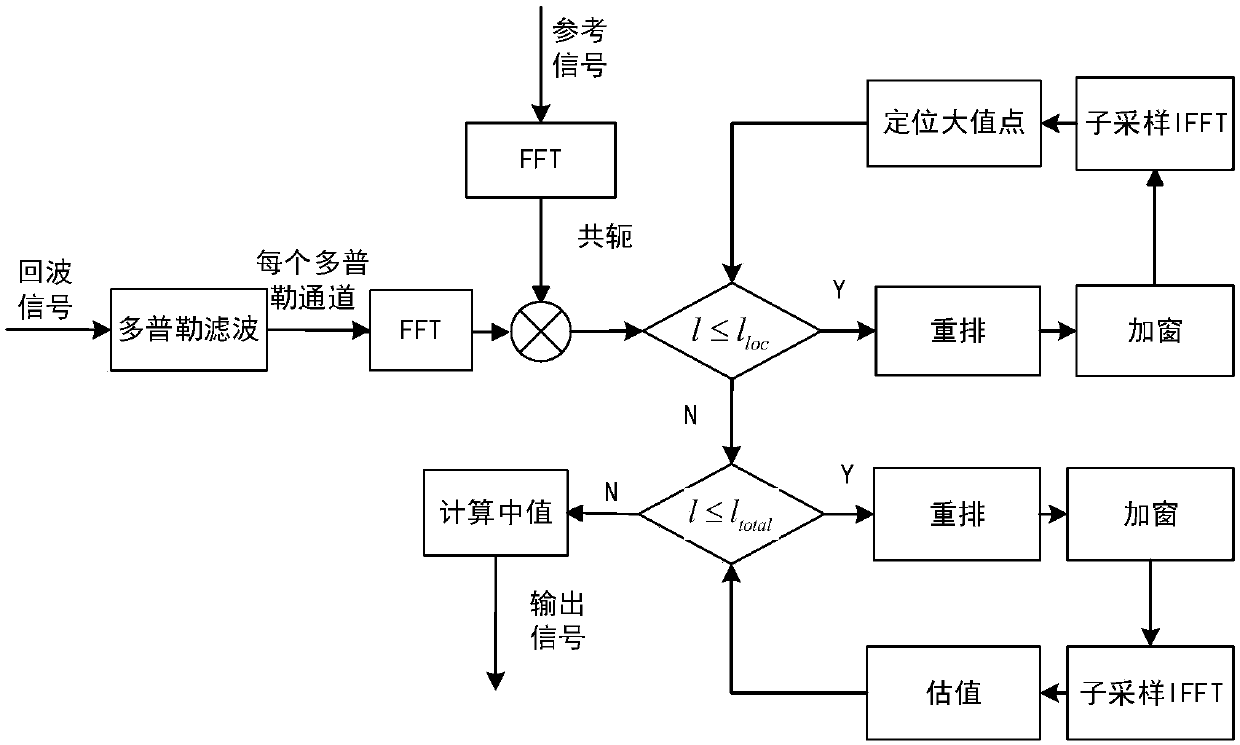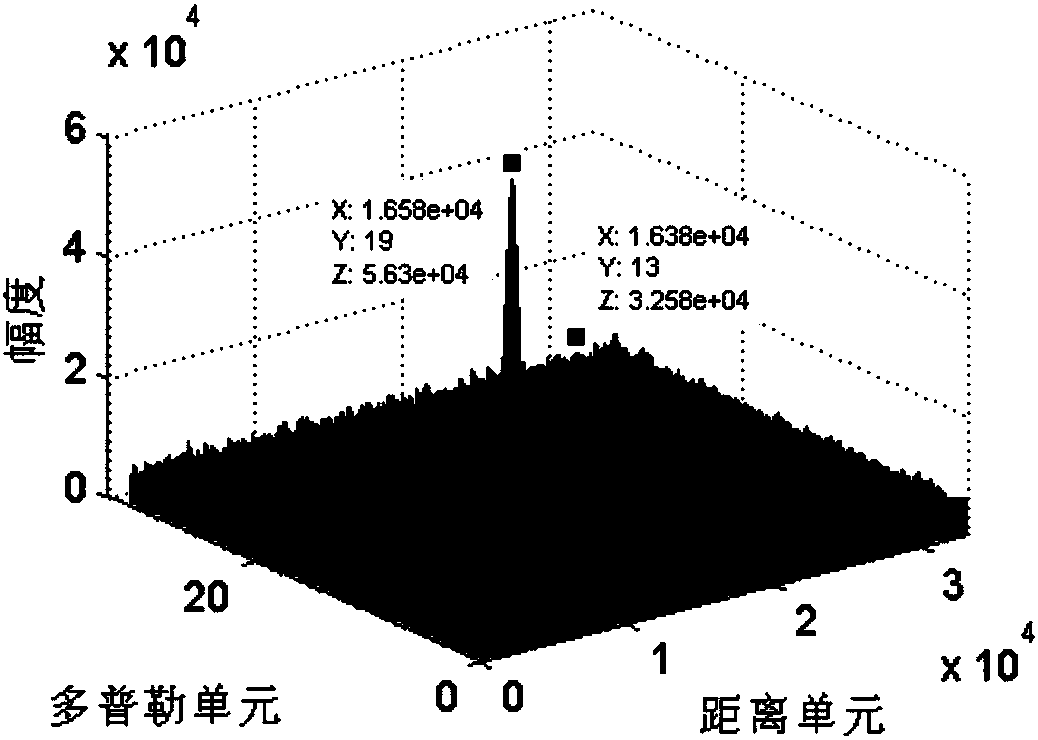A fast pulse pressure method based on sparse inverse Fourier transform
A technology of inverse Fourier transform and Fourier transform, which is applied in the field of radar target detection signal processing, and can solve the problems of large amount of computation in the pulse pressure method
- Summary
- Abstract
- Description
- Claims
- Application Information
AI Technical Summary
Problems solved by technology
Method used
Image
Examples
Embodiment 1
[0063] This embodiment illustrates the process of applying the "a fast pulse pressure method based on sparse inverse Fourier transform" of the present invention to perform pulse pressure on two-component weak target echoes.
[0064] figure 1 It is the method flow chart of "a fast pulse pressure method based on sparse inverse Fourier transform" of the present invention and the flow chart of this embodiment.
[0065] from figure 1 It can be seen that this method includes the following steps:
[0066] Step A: calculating the reference signal spectrum;
[0067] Specifically to this embodiment, the reference signal is equal to the radar emission signal, and the radar parameters are set to: accumulated pulse number P=32, pulse width T p =260μs, pulse repetition period T=2ms, bandwidth B=10MHz, sampling rate f s = 15MHz;
[0068] Step B: Perform Doppler filtering on the echo signals of the two-component weak targets between pulses, and then perform FFT operations on all Doppler ...
Embodiment 2
[0080] In this embodiment, according to the parameter settings described in Embodiment 1, a computer simulation was carried out by using matlab. In the simulation experiment, this example simulates a two-component LFM signal to simulate the echo signal containing two weak targets.
[0081] The frequency domain pulse pressure is directly performed on the echo signal of the weak target, and the result is as follows figure 2 As shown, the X coordinate is the distance unit, the Y coordinate is the number of accumulated pulses, and the Z coordinate is the signal amplitude. It can be seen from the figure that the target signal is relatively weak, almost submerged in the noise, and its output signal-to-noise ratio is about 5.1dB. In this case, the SIFFT transformation cannot locate the position of the large-value point in the time domain, let alone estimate the magnitude of the large-value point. Therefore, SIFFT cannot be directly used to replace the IFFT in the frequency-domain pu...
PUM
 Login to View More
Login to View More Abstract
Description
Claims
Application Information
 Login to View More
Login to View More - R&D
- Intellectual Property
- Life Sciences
- Materials
- Tech Scout
- Unparalleled Data Quality
- Higher Quality Content
- 60% Fewer Hallucinations
Browse by: Latest US Patents, China's latest patents, Technical Efficacy Thesaurus, Application Domain, Technology Topic, Popular Technical Reports.
© 2025 PatSnap. All rights reserved.Legal|Privacy policy|Modern Slavery Act Transparency Statement|Sitemap|About US| Contact US: help@patsnap.com



